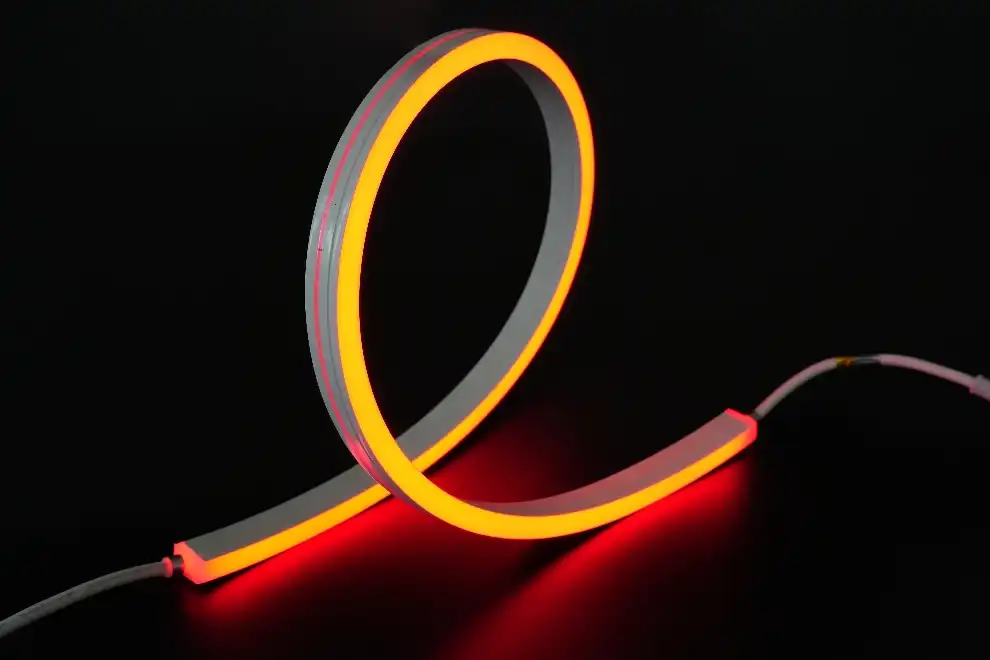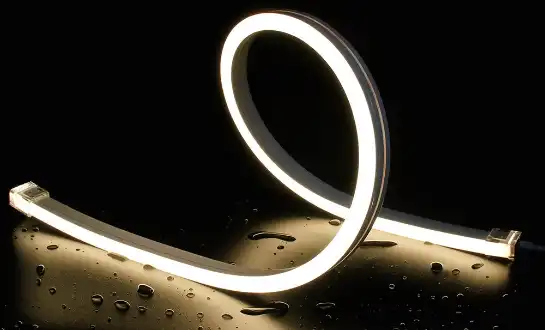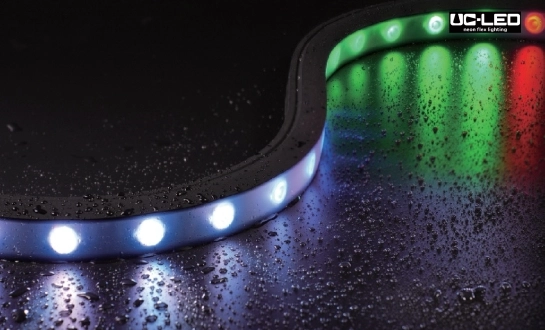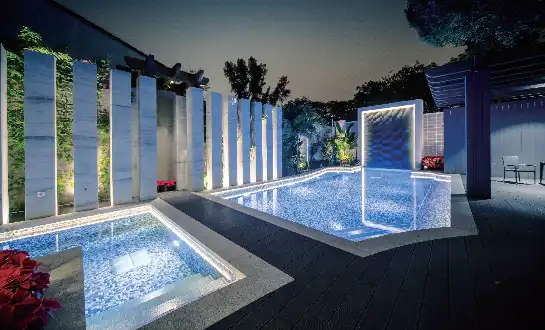Introducing Voltage Drop in LED Neon Flex Installations
LED neon flex has revolutionized the lighting industry with its versatility and energy efficiency. However, when installing long runs of LED neon flex, voltage drop becomes a critical consideration. Voltage drop refers to the decrease in electrical potential along the length of a conductor, which can result in dimming or inconsistent brightness in LED strips.
The phenomenon occurs due to the resistance in the copper traces of the LED strip. As electricity travels along the strip, it encounters this resistance, causing a gradual decrease in voltage. This effect is more pronounced in longer installations, potentially leading to noticeable differences in brightness between the beginning and end of the strip.
Factors Influencing Voltage Drop
Several factors contribute to voltage drop in LED neon flex installations:
- Length of the LED strip: Longer runs experience more significant voltage drop.
- Current draw: Higher power consumption leads to increased voltage drop.
- Wire gauge: Thinner wires have higher resistance, exacerbating voltage drop.
- Operating voltage: Lower voltage systems (e.g., 12V) are more susceptible to voltage drop than higher voltage systems (e.g., 24V).
Understanding these factors is crucial for designing effective long-run LED neon flex installations that maintain consistent brightness and performance throughout the entire length.
Strategies to Mitigate Voltage Drop in LED Neon Flex
Implementing effective strategies to combat voltage drop is essential for achieving optimal performance in long LED neon flex installations. Here are some proven techniques to minimize voltage drop and ensure consistent illumination:
Strategic Power Injection
Power injection involves connecting the power supply to multiple points along the LED neon flex strip. This technique reduces the distance electricity needs to travel, effectively minimizing voltage drop. For long runs, consider injecting power every 5 meters or at intervals calculated based on the specific requirements of your installation.
Utilize Higher Voltage Systems
Opting for a 24V LED neon flex system instead of a 12V system can significantly reduce voltage drop. Higher voltage systems require less current to deliver the same power, resulting in less voltage drop over long distances. This approach is particularly effective for installations exceeding 5 meters in length.
Choose Thicker Gauge Wires
Using thicker gauge wires for power connections can substantially reduce voltage drop. Thicker wires have lower resistance, allowing for more efficient power transmission. For long runs, consider using 14 AWG or 12 AWG wires instead of the standard 18 AWG or 16 AWG.
Implement Parallel Wiring
Wiring LED neon flex strips in parallel rather than series can help maintain consistent voltage across all sections. This configuration ensures that each segment receives the same input voltage, reducing the cumulative effect of voltage drop in long installations.
Calculate and Plan for Voltage Drop
Before installation, calculate the expected voltage drop using the specific parameters of your project, including strip length, power consumption, and wire gauge. This proactive approach allows you to design an appropriate power distribution system that compensates for voltage drop.
Advanced Techniques for Optimal LED Neon Flex Performance
Beyond the fundamental strategies, there are advanced techniques that can further enhance the performance and consistency of long-run LED neon flex installations:
Voltage Boosters
Voltage boosters, also known as DC-DC converters, can be integrated into the system to compensate for voltage drop. These devices step up the voltage at strategic points along the LED neon flex run, ensuring that each section receives the optimal voltage for operation.
Smart Power Supplies
Utilizing intelligent power supplies with built-in voltage regulation can automatically adjust output to compensate for voltage drop. These advanced power supplies monitor the voltage along the strip and make real-time adjustments to maintain consistent brightness.
Segmented Control
For extremely long runs, consider dividing the LED neon flex into separately powered segments. Each segment can have its own power supply and controller, allowing for more precise voltage management and the ability to create dynamic lighting effects.
Custom PCB Design
For large-scale projects, working with manufacturers to develop custom LED neon flex with thicker copper traces or optimized circuit design can significantly reduce voltage drop. This bespoke approach ensures that the LED strip is tailored to the specific requirements of your installation.
Temperature Considerations
Be aware that temperature fluctuations can affect voltage drop. In environments with significant temperature variations, consider using temperature-compensated power supplies or implementing additional voltage drop calculations to account for these changes.
By implementing these advanced techniques, you can achieve exceptional performance and visual consistency in even the most challenging long-run LED neon flex installations. The key is to approach each project with a comprehensive understanding of voltage drop dynamics and a willingness to employ innovative solutions.
Conclusion
Mastering the challenge of voltage drop is crucial for creating stunning, long-run LED neon flex installations. By understanding the underlying causes and implementing a combination of strategic power management, appropriate hardware selection, and advanced techniques, you can ensure that your LED neon flex projects maintain consistent brightness and performance throughout their entire length.
Remember that each installation is unique, and the best approach often involves a customized combination of these strategies. For expert guidance on your specific LED neon flex project or to explore custom solutions tailored to your needs, don't hesitate to reach out to our team of lighting specialists at Linda@uc-led.com. With the right knowledge and techniques, you can push the boundaries of what's possible with LED neon flex, creating truly awe-inspiring lighting installations that stand the test of time.







